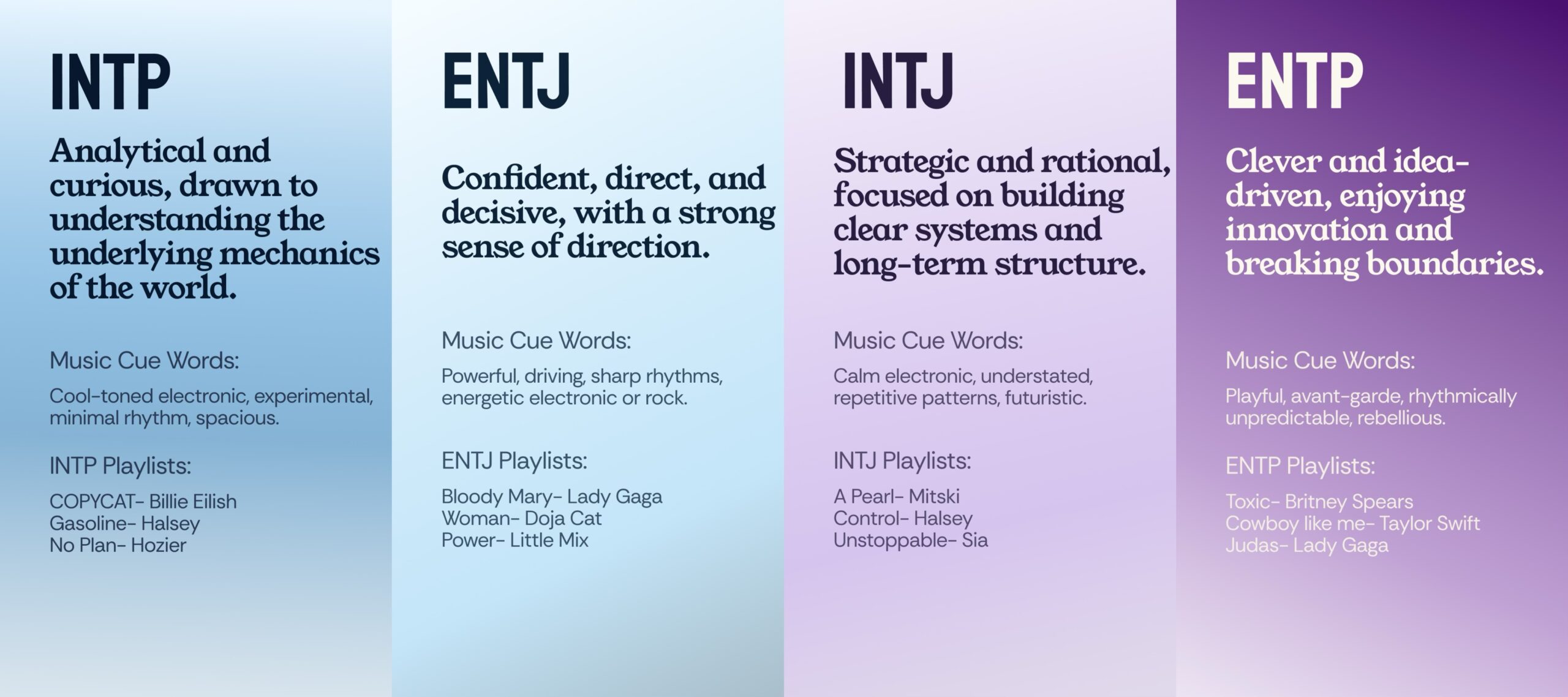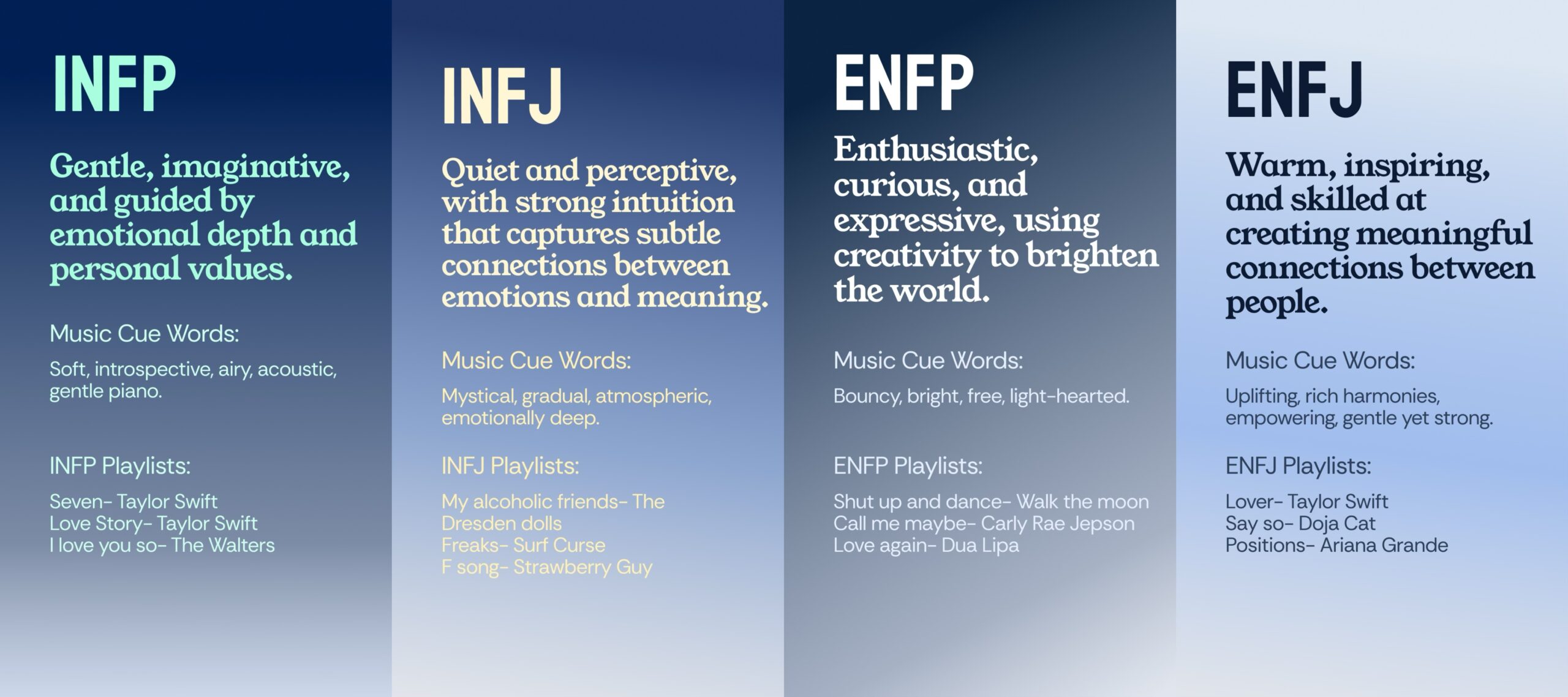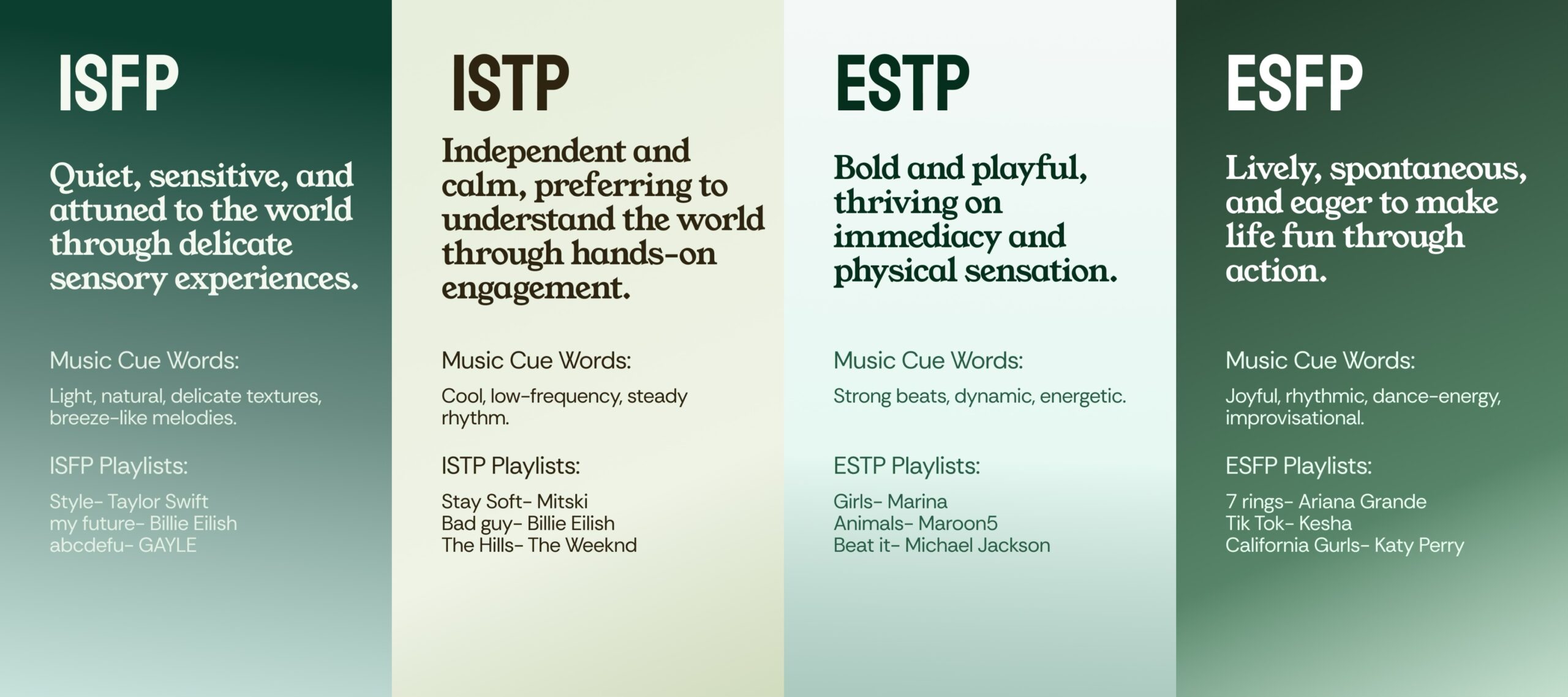Echoes of the Self: A Personality Playlist Experiment

Summary
When no label is there to define what “type” you are,
how would you describe yourself?
And when a personality category is placed upon you,
how might it begin to shape or shift you?
In an era where personality tests circulate like modern-day horoscopes,
we often drift unconsciously between
“the self we genuinely feel” and “the self shaped by personality classification”.
This open toolkit invites you to pause between these two selves and listen to that subtle,
but very real, difference.
Within 20 minutes, music will become your mirror,
and you will create two small sonic portraits of yourself:
one drawn from your intuition, and one from the language of your personality type.
Placed side by side, these portraits may reveal that identity is never a fixed label,
but a melody that is always changing.
You need no prior knowledge—
only a song, a moment of honesty,
and a willingness to hear yourself again.
Full Process (20 minutes)
This is not a test with right or wrong answers, it’s a small experiment: We’ll compare your “Intuitive self” and your “type-influenced self” to explore the tension between the two.
Step 1 (5 mins): Intuitive Song Selection (Pre-MBTI)
Don’t take the test yet. Close your eyes for 10 seconds and think:
“What kind of music best represents you at this moment?”
“Is it the lyrics, melody, rhythm, or simply a mood?”
The goal is not to describe the song, but to capture your current emotional impression, this will later become a reference point when comparing it with your “type-based” choice.
Open any music source you can access (YouTube Audio Library, Free Music Archive, Spotify/Apple, your own library, or even a tune you hum yourself).
Choose one song and record your response in any way you like under “Section A” of your worksheet:
“Why did I choose it?”
You may use keywords or a single sentence to express how the song makes you feel.
Examples:
“The lyric “running late” overlaps with my current anxiety, the beat feels like my racing heartbeat before a deadline.”
“Blue, slow tempo, lonely, floating.”
Step 2: Quick MBTI Test (3 minutes)
Take a deep breath ——
Now we officially BEGIN the test:
Dimension 1
1. At a social gathering where you don’t know many people, after it ends you will most often:
A. Feel energized and more mentally activated
B. Feel drained and need some quiet time to recover
2. On a completely free weekend with no plans, you are more likely to:
A. Reach out to friends and arrange to go out or do something together
B. Enjoy being alone and immersing yourself in your personal activities
3. When you attend an event where you don’t know anyone, you usually:
A. Try to blend into the atmosphere—join a small group or greet others with a smile
B. Find a low-attention spot to sit or stand, waiting for others to approach you first
Dimension 2
1. When you do a task or project for the first time, you tend to:
A. Break down the concrete requirements and understand each step one by one
B. First think broadly: “What are the possible directions or approaches for this task?”
2. When recalling a past event, you more easily remember:
A. Concrete details such as location, time, or people’s actions
B. The atmosphere, impression, meaning, or overall feeling
3. When asked to propose an idea, you naturally start from:
A. “How practical is this?” or “Can this actually be done?”
B. “How can I innovate?” or “What concept do I want to express?”
Dimension 3
1. When someone complains to you about a problem, your first natural thought is:
A. How can this problem be solved?
B. What emotions are they feeling right now?
2. When you see others doing something inefficiently or illogically, you tend to:
A. Feel compelled to point out a better way
B. First consider their feelings and avoid correcting them too quickly
3. When your decision might affect people around you, you naturally consider:
A. Whether the decision is clear, reasonable, and workable
B. How this decision will make others feel, hoping everyone feels respected
Dimension 4
1. When planning a trip, you prefer your itinerary to:
A. Follow the general plan so you feel a sense of control
B. Change flexibly based on the moment, even if it means deviating from the plan
2. In your daily routine, you are more like someone who:
A.Prefers stable, structured plans and tries to stick to them
B. Acts based on mood and current state, with a rhythm that may shift
3. In team discussions that have no clear direction, you tend to:
A. Suggest setting up a basic framework before continuing the discussion
B. Let everyone freely share ideas and let the direction emerge naturally

A calming sky-and-grass image placed here for a short visual pause.
After answering the 12 questions, you will receive four preference indicators:
Dimension 1 represents “E/I” ➡️ How you gain energy
Extraversion (E) directs energy outward, while Introversion (I) directs energy inward.
Dimension 2 represents “S/N” ➡️ How you take in information
Sensing (S) focuses on concrete details, while Intuition (N) focuses on possibilities.
Dimension 3 represents “T/F”➡️ How you make decisions
Thinking (T) prioritizes logic, while Feeling (F) prioritizes relationships and emotions.
Dimension 4 represents “J/P”➡️ How you interact with the external world
Judging (J) prefers structure and planning, while Perceiving (P) prefers flexibility and adaptability.
How are the results calculated?
This test uses a “majority tendency rule” to determine your preference in each dimension.
There are four dimensions in total: E/I, S/N, T/F, J/P.
Each question has two options: A represents one side of the preference; B represents the opposite side
E / I Dimension:
If you choose 2 or more A’s → you lean toward E
If you choose 2 or more B’s → you lean toward I
S / N Dimension:
If you choose 2 or more A’s → you lean toward S
If you choose 2 or more B’s → you lean toward N
T / F Dimension:
If you choose 2 or more A’s → you lean toward T
If you choose 2 or more B’s → you lean toward F
J / P Dimension:
If you choose 2 or more A’s → you lean toward J
If you choose 2 or more B’s → you lean toward P
How to Understand Your Results?
Please keep in mind:
Your result reflects a preference, not a fixed personality.
You may show different tendencies in different contexts or life stages.
This is not a definition of who you are, but rather a descriptive language you can use to reflect on yourself.
This is not a strict psychological measurement — it is simply a quick tool to help you notice your general direction at this moment.
You may record your type in Section B of your worksheet.
Next, you will see for each personality type:
1. A one-sentence type description
A neutral summary of your current preference pattern, helping you grasp the core idea of this type quickly.
2. Music cue words
These may refer to rhythm, atmosphere, energy, or emotional tone.
They are designed to help you reflect on questions such as:
“If my personality were a song, what would its energy feel like?”
“Would it be soft? Intense? Bright? Mysterious? Free?”
You can use these cues to help you search for music.
3. Optional song examples
These are drawn from personality-themed playlists on various music streaming platforms.
They serve only as inspiration, and you are not required to use them.
Step 3 (5 mins): Type-Based Song Selection
Choose another song based on your type.
Now that you know your type label, Please choose a song from any music platform that you feel best matches this personality type, based on your own interpretation.
This song will be compared with your “intuition song” in the next step for reflection.
In Section C of your worksheet, write down:
1. “The song title and a brief explanation of why it matches your type.”
2. “What are the most obvious differences between your first song (intuitive) and second song (type-based)?
(Comparative Reflection, you can consider melody, tempo, emotion, lyrical theme, instruments, dynamics, etc.)
3. “Which song feels more like the “real me”? Why?
4. “Did I subconsciously adapt to my type? If yes, what was I aligning with —- pressure, comfort, or identity?
Step 4 (5 mins): Sharing & Peer Feedback
Step D|Upload and Listen
Post your two songs (or descriptions) and three reflection sentences on Miro.
Then, randomly choose one peer’s card to quickly listen and respond with one micro-feedback comment (choose one prompt):
“What differences did I hear between your two songs?”
Or “Which song feels more like the ‘you’ you described, and why?”
Or “In which reflection sentence did you sound most honest to yourself?”
(Image created by Kexin Tan, 2025. Licensed under CC BY 4.0.)
(Image created by Kexin Tan, 2025. Licensed under CC BY 4.0.)
(Image created by Kexin Tan, 2025. Licensed under CC BY 4.0.)
(Image by Brett Jordan, licensed under CC BY 2.0. Source: https://flickr.com/photos/x1brett/4814209463)
(Image created by Kexin Tan, 2025. Licensed under CC BY 4.0.)






